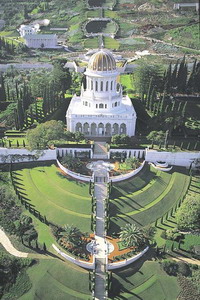Login form
Newfoundland and Labrador
 More than 1,000 years ago, a Viking ship lost at sea drifted into a fish-filled bay in eastern North America. On shore, the sailors saw lush green land and forests. A few years later, Viking explorer Leif Eriksson returned to the island that later became known as Newfoundland.
More than 1,000 years ago, a Viking ship lost at sea drifted into a fish-filled bay in eastern North America. On shore, the sailors saw lush green land and forests. A few years later, Viking explorer Leif Eriksson returned to the island that later became known as Newfoundland.
In 1963, the ruins of a Viking settlement were found at a Newfoundland fishing village, L’Anse aux Meadows. Is this ancient settlement the first place built by Europeans in North America? It could be. Was it built by Eriksson himself? Some historians think so.
|
Facts About Newfoundland and Labrador |
|
|
|
|
|
Capital |
St. John's |
|
Population |
520,000 people |
|
Rank among provinces and territories in population |
9th |
|
Major cities |
St. John's, Corner Brook, Conception Bay South |
|
Area |
156,000 square miles |
|
Rank among provinces and territories in area |
10th |
|
Entry into federation |
March 31, 1949 |
|
Provincial bird |
Puffin |
|
Provincial flower |
Pitcher Plant |
|
Abbreviation |
NL |
ONE PROVINCE—TWO LANDS
Newfoundland is an island in the Atlantic Ocean. Today, it forms one part of Canada’s easternmost province. The other part is Labrador, a much larger region on Canada’s mainland.
The province of Newfoundland and Labrador is very thinly settled. Most towns hug the province’s rocky, jagged coastlines. A wilderness lies inland. It has rolling land and many rivers, lakes, bogs, and forests. Black spruce, the official tree of the province, covers much of the land.
AN OLD PLACE WITH A NEW NAME
The Viking settlements on North America’s northeastern coast disappeared soon after the Vikings built them. Europeans didn’t return to the region for 500 years. One European, Italian explorer John Cabot, hoped to reach Asia by sailing northwest from Europe.
Instead, Cabot reached a “new found isle” in the North Atlantic Ocean in 1497. The surrounding waters were rich with codfish. Word of his discovery spread. Soon the region was filled with fishing boats and explorers from England, Spain, France, and Portugal. Cabot’s name for the land—Newfoundland—stuck.
In 1583, English explorer Sir Humphrey Gilbert landed on Newfoundland, near the present-day city of St. John’s. He claimed the land for England. Today, a memorial marks the site where he made his claim. The settlement Gilbert founded at St. John’s was the first English colony in North America.
Newfoundland and Labrador have been united since 1809, but Labrador was long neglected. Except for short periods when it fell to France, Newfoundland remained in British hands until 1949. That year, it became Canada’s tenth province. In 1965, its name was changed to Newfoundland and Labrador.
Most people who live in Newfoundland and Labrador trace their ancestors to Britain. Inuit and other native peoples also live in the province.
BRRRRRR! IT’S COLD UP HERE!
Winters can be very cold, especially in Labrador. Winter temperatures in the province frequently fall well below 0° Fahrenheit (–18° Celsius). Even in summer, ice sometimes floats along the coast. Fog and floods are common. In April 1912, the British ocean liner Titanic struck an iceberg and sank near the island of Newfoundland.
The hardy wildlife of the province includes black bears, caribou, otters, muskrats, fox, and lynx. Labrador also has polar bears, mink, wolverines, and wolves. Perhaps French explorer Jacques Cartier saw some of these animals on his visits in the 16th century. In his journal, he described Labrador as “fit only for wild beasts.”
KEEPING BUSY IN THE CAPITAL
St. John’s is the capital of Newfoundland and Labrador. It is also the province’s largest city and a major port. Nearly one-third of the population lives in and around St. John’s.
Signal Hill is on St. John’s east side. On this hill in 1901, Italian inventor Guglielmo Marconi received the first radio message sent across the Atlantic Ocean. At the hill’s peak is Cabot Tower. It was built in 1897 to celebrate the 400th anniversary of John Cabot’s first voyage to the region.
Every August visitors come to see the St. John’s Regatta. This boat race has been held on Quidi Vidi Lake since 1826. It is the oldest ongoing sports event in North America.
FISHING—A WAY OF LIFE
Fishing has always been big business in Newfoundland and Labrador. The coastal waters were full of cod and other fish. But by the late 20th century, few cod were left. Many people could no longer earn a living by cod fishing. Some of the people left the province. Some started catching other kinds of fish and shellfish. Today, fish farmers raise many types of fish in nets anchored off the coast.
Newfoundland and Labrador relies heavily on other natural resources. Vast forests supply wood for the province’s paper mills. The province also has rich deposits of iron, nickel, petroleum, and natural gas.
Source: Microsoft ® Encarta

